Pool of Radiance: Ruins of Myth Drannor
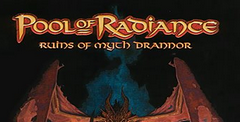
- Developer: Stormfront Studios
- Genre: Adventure
- Originally on: Windows (2001)
- Works on: PC, Windows
- User Rating: 6.0/10 - 3 votes
- Rate this game:
Game Overview
Welcome to the Pool Of Radiance II playtest. You will find herein a fairly detailed analysis of the early part of the game, along with an honest opinion on which direction the game is heading, and whether or not it's heading somewhere you are likely to want to follow it when it's released in a couple of months.
First off, forget the original Pool Of Radiance. Aside from the heavy use of detailed AD&D stats, rules and numbers, this game bears little or no resemblance to its accomplished but antiquated predecessor, which captured the imagination of goblin-bashers around the world all those years ago. Visually, of course, it's an entirely new ball game. The graphics won't stun you, they won't bowl you over, you won't be writing letters to your friends to tell them about the bestlooking RPG you've ever seen. However, while the graphics are reasonably impressive (particularly for spell effects), it is my belief that the kind of people who will want to play this game won't care one bit what it looks like. This an old-skool RPG in every sense of the word. You can play it as though you care not one toss for all the numbercrunching and rules in effect behind the action, but if you do so you will surely die, and often. Yes, this is a hardcore goblin affair: casual gamers need not apply.
Bring It On
Character creation. This is the point where you can either grab a couple of ready-made characters and head straight into the action, or do the sensible thing and make a few of your own that will actually come in useful. You can have four characters in total. For the purposes of this playtest I created a cleric (for healing and turning undead), a rogue (for opening locked doors and chests), a fighter (for upfront melees), and a sorcerer (for inflicting heavy damage). At the beginning of the game there are a few minor skirmishes but nothing major - it's only when you get to the first dungeon that the game starts proper. There's a shopkeeper in the first area before the dungeon, but he sells nothing you want except things you can't afford so let's ignore him for now.
The first dungeon is huge. I spent a long time in it and barely uncovered half of it. All the usual RPG fare can be found here: locked doors that require specific keys, NPCs that give you quests, hidden doors and traps, and of course, monsters, everywhere you turn. Come close to any monster in the dungeon and combat is automatically initiated. Each of your characters gets a 'turn' to perform an action or attack a monster, and the monsters do exactly the same thing on their turn. One thing that struck me as odd straight away was the amount of times my characters missed the enemy. I'm not joking, my fighter went through three long battles without hitting a single thing. This particular point will determine whether love or hate Pool Of Radiance. If you're the kind of person who gets frustrated when your characters keep 'missing' the enemy that's standing beside them (successful attacks are determined by hidden dice rolls), then stay as far away from this game as you can. You will miss more times than you hit. The advantage here is most of the monsters miss just as often, and you can find items in the dungeons that increase your chance of successful hits (once my fighter eventually found an axe he could actually hit something with, it was cause for great celebration). Be warned, though, it's no standard realtime RPG. If you want constant action it's unlikely to be the game for you.
Test Results
It's probably only serious AD&D fans that will love this. I say probably because while they will drool over all the hidden stats and dice-rolling nonsense going on in the background, it remains to be seen whether the game will open up, or whether it will prove to be just another long dungeon crawl with nothing to break the monotony. Will there be outdoor areas? Will you meet interesting NPCs? Will the storyline keep you engrossed? These are all questions I can't answer here, but I will answer them in next issue's detailed review. I bet you can't wait.
I doubt many of you will remember the original game in this series. It appeared at a time when SSI was literally churning out dozens of titles in this genre, all of them more or less identical save for minor differences in plot and characters. Pool Of Radiance was one of the better ones, and so remains in the minds of hardcore veterans who have been with the RPG genre from the beginning. This, the sequel, bears no resemblance whatsoever to the original. Visually, obviously, it's far superior, but in terms of game mechanics it plays exactly how you would expect any new RPG to play. Think Baldur's Gate 2 and you have the right idea.
It's all about forming a party of adventurers from classic RPG classes, such as warriors, palladins, wizards etc, and venturing forth to kill whatever comes your way, and solve a few quests while you're at it. There's nothing particularly wrong with that, it's a tried and tested formula, and I am sure the creators of Pool Of Radiance II must have been thinking: 'If it's good enough for Baldur's Gate, it's good enough for us, right?'. Not quite.
It S Not What You Do...
...it's how you do it, and Pool Of Radiance II takes an almost casual approach to every aspect of its gameplay. The quests are passable, but designed in a way that dictates you only come across quest objects or characters by chance when you're wading through a dungeon. Your journal keeps a list of all the quests you currently have assigned, but by the time you get to them, you will have completely forgotten what they were about as they seem sort of lumbered in with everything else you have to do while you're hacking your way through one monster after another. This gives a general feeling of simply going through the motions, rather than actively pursuing quests in order to get to the bottom of whatever comedy disaster is going on in each one of them. Visually, Pool Of Radiance 2 is nothing to write home about. In fact, compared to games such as Baldur's Gate 2it looks decidely unpolished. The graphics are more functional than inspirational, which would appear to be an indication that the games' designers are relying heavily on the gameplay to carry the title. This in itself is not a criticism if the rises above the norm, but in the case of PRII what you see is literally what you get, and there are no surprises or innovations in terms of game mechanics. If you have played any of the big-name turn-based RPGs, you have played PRII. It does't have the wildly imaginative sub-plots or dark humour of Planescape: Torment. It does not have the style and panache of Baldur's Gate 2. It does not have the combination of themes seen in Arcanum. What it does have, however, is combat, and lots of it.
Fighting Talk
It is perhaps more like Icewind Dale than Baldur's Gate, in that it relies heavily on relentless combat to carry it along. Virtually everywhere you go you'll be fighting something or other along the way. As has become the norm with these games, PRII otters a variety ot speeds at which to play out the combat, but as ever, only turn-based combat really works effectively since your party will get slaughtered if you don't take control of them and tell them what to do. This is typical of games based on the AD&D ruleset. You can't have a genuine real-time RPG with this system, so turn-based combat is what you're going to get, like it or not. This has its advantages: it makes for a more strategic approach to battles and forces you to think before you act. It also has its drawbacks: it can, at times, be mind-numbingly boring. That's not to say PRII is a bad game. It's perfectly playable in an almost mindless way and even proves addictive at times, particularly when your characters get to a reasonable level and have better spells that make a real difference in combat. It's fair to say though, that casual gamers will get nothing out of this game, and needless to say, if you're not a fan of the genre, this is not the title that will convert you. If you are a hardcore RPG veteran, you will find it perfectly playable and enjoyable, and will get weeks of gameplay out of it (it's a big game). Otherwise, steer clear.
Damage Limitation
You will find that more often than not you are heavily outnumbered in battle sequences. Given that your melee fighters are almost bound to miss their target 80 per cent of the time, while the enemy monsters hit with annoying regularity, there are only two tactics guaranteed to get you through battles with any vague degree of success. The first is simple: if you have a cleric and you are fighting undead, use 'turn undead' to wipe out the majority of opponents, the rest of the battle is then a cinch. The second: if you have a cleric in your party and there are no undead opponents, use the cleric spell 'hold person' to keep monsters at bay so your melee fighters can deal with them one by one. In short: make sure you have a cleric, got it?
System Requirements
Processor: PC compatible, ![]() P-100
P-100
OS: ![]() Windows 9x, Windows 2000
Windows 9x, Windows 2000 ![]() Windows XP, Vista, Win 7, Win 8, Win 10.
Windows XP, Vista, Win 7, Win 8, Win 10.
Game Features:![]() Single game mode
Single game mode
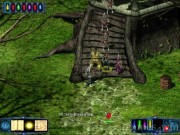
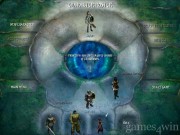
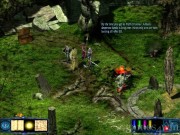
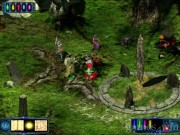
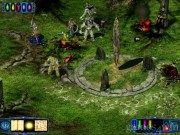
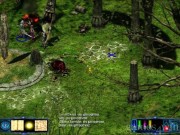
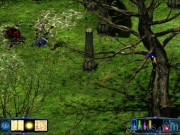
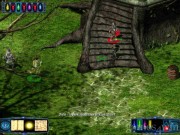
 Diablo II: Lord of Destruction
Diablo II: Lord of Destruction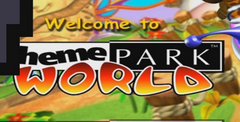 Theme Park World
Theme Park World Sid Meier's SimGolf
Sid Meier's SimGolf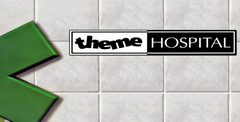 Theme Hospital
Theme Hospital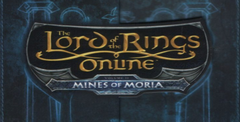 The Lord of the Rings Online: Mines of Moria
The Lord of the Rings Online: Mines of Moria Honey Select
Honey Select Negligee
Negligee Negligee: Love Stories
Negligee: Love Stories Summer Fling
Summer Fling